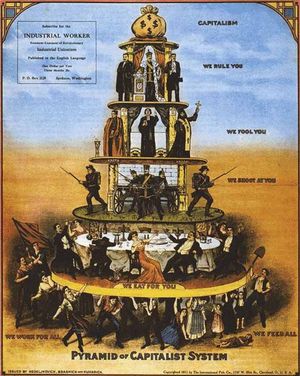The evolution of business begins in ancient times and continues to this very day. Business will always continue to evolve to keep up with our ever changing world.
The phases in the evolution of business follow a logical order. One leads to the next following the struggle of the people during the history of the world to gain economic independence by pursuing the rights of personal property and the accumulation of personal wealth. We will consider Feudalism, Mercantilism, Capitalism, Commerce, Property Rights, and The Industrial Revolution.
Feudalism is a business system based on the control of property rights to land and labor. Jones: Introduction to Business: How Companies Create Value for People. (2) 37. In feudalism, the ruling class of nobility controlled all property rights. Often land was taken by force and whoever controlled the most land was the most powerful.
By the 16th century, the emergence of Mercantilism began to allow merchants and bankers to also acquire land from money made through trade. Mercantilism is the business in which a product’s price differences are exploited by trading the product across markets and countries. Jones: Introduction to Business: How Companies Create Value for People. (2), 45.
Capitalism allows people to own resources in production, trade, and the distribution of goods and services. Jones: Introduction to Business: How Companies Create Value for People. (2), 51.
Commerce is a division of trade or production which deals with the exchange of goods and services from producer to final consumer. Commerce is the driving force behind Capitalism. It is the activity of exchanging goods and services for a profit.
Property rights pertain not only to land but also to any valuable resource such as the use of one’s own labor; the tangible results of enterprise such as patents and copyrights; and ownership of financial capital in the form of bank accounts and stock. Jones: Introduction to Business: How Companies Create Value for People. (2), 39. During Feudalism there were no property rights, Mercantilism saw the beginnings of property rights, and finally Capitalism established property rights.
The introduction of Steam Power helped to begin the industrialization of our society.
It was a crucial event in the cause of the Industrial Revolution. Jones: Introduction to Business: How Companies Create Value for People. (2), 48. The Steam Engine generated the power to create industries in manufacturing, and more efficient means of transportation such as canals and railways.
The Second Industrial Revolution followed the first with the introduction of steam-powered ships, railways, internal combustion engines, and electrical power generation in the 19th century.
The Industrial Revolution continues with the World Wide Web in the 20th Century and will continue far into the future. We can instantly reach the far corners of the earth in communication and trade with the click of a mouse. The World Wide Web is promoting global trade and communications.
Sources:
Jones: Introduction to Business (2007).
The McGraw Hill Companies. (2) 37,39,45,48,51.



